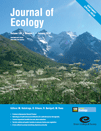Ver ítem
- xmlui.general.dspace_homeCentros Regionales y EEAsCentro Regional Patagonia SurEEA Santa CruzArtículos científicosxmlui.ArtifactBrowser.ItemViewer.trail
- Inicio
- Centros Regionales y EEAs
- Centro Regional Patagonia Sur
- EEA Santa Cruz
- Artículos científicos
- Ver ítem
Invasions: the trail behind, the path ahead, and a test of a disturbing idea
Resumen
We provide a brief overview of progress in our understanding of introduced plant species. Three main conclusions emerge from our review: (i) Many lines of research, including the search for traits that make species good invaders, or that make ecosystems susceptible to invasion, are yielding idiosyncratic results. To move forward, we advocate a more synthetic approach that incorporates a range of different types of information about the introduced species
[ver mas...]
We provide a brief overview of progress in our understanding of introduced plant species. Three main conclusions emerge from our review: (i) Many lines of research, including the search for traits that make species good invaders, or that make ecosystems susceptible to invasion, are yielding idiosyncratic results. To move forward, we advocate a more synthetic approach that incorporates a range of different types of information about the introduced species and the communities and habitats they are invading. (ii) Given the growing evidence for the adaptive capacity of both introduced species and recipient communities, we need to consider the implications of the long‐term presence of introduced species in our ecosystems. (iii) Several foundational ideas in invasion biology have become widely accepted without appropriate testing, or despite equivocal evidence from empirical tests. One such idea is the suggestion that disturbance facilitates invasion. We use data from 200 sites around the world to provide a broad test of the hypothesis that invasions are better predicted by a change in disturbance regime than by disturbance per se. Neither disturbance nor change in disturbance regime explained more than 7% of the variation in the % of cover or species richness contributed by introduced species. However, change in disturbance regime was a significantly better predictor than was disturbance per se, explaining approximately twice as much variation as did disturbance. Synthesis: Disturbance is a weak predictor of invasion. To increase predictive power, we need to consider multiple variables (both intrinsic and extrinsic to the site) simultaneously. Variables that describe the changes sites have undergone may be particularly informative.
[Cerrar]

Autor
Moles, Angela;
Flores Moreno, Habacuc;
Bonser, Stephen P.;
Warton, David I.;
Helm, Aveliina;
Warman, Laura;
Eldridge, David J.;
Jurado, Enrique;
Hemmings, Frank A.;
Reich, Peter B.;
Cavender Bares, Jeannine;
Seabloom, Eric William;
Mayfield, Margaret M.;
Sheil, Douglas;
Djietror, Jonathan C.;
Peri, Pablo Luis;
Enrico, Lucas;
Cabido, Marcelo Ruben;
Setterfield, Samantha;
Lehman, Caroline;
Thomson, Fiona;
Fuente
Journal of Ecology 100 (1) : 116-127 (January 2012)
Fecha
2012-01
Editorial
Wiley
ISSN
0022-0477
1365-2745
1365-2745
Formato
pdf
Tipo de documento
artículo
Palabras Claves
Derechos de acceso
Restringido
 Excepto donde se diga explicitamente, este item se publica bajo la siguiente descripción: Creative Commons Attribution-NonCommercial-ShareAlike 2.5 Unported (CC BY-NC-SA 2.5)
Excepto donde se diga explicitamente, este item se publica bajo la siguiente descripción: Creative Commons Attribution-NonCommercial-ShareAlike 2.5 Unported (CC BY-NC-SA 2.5)

